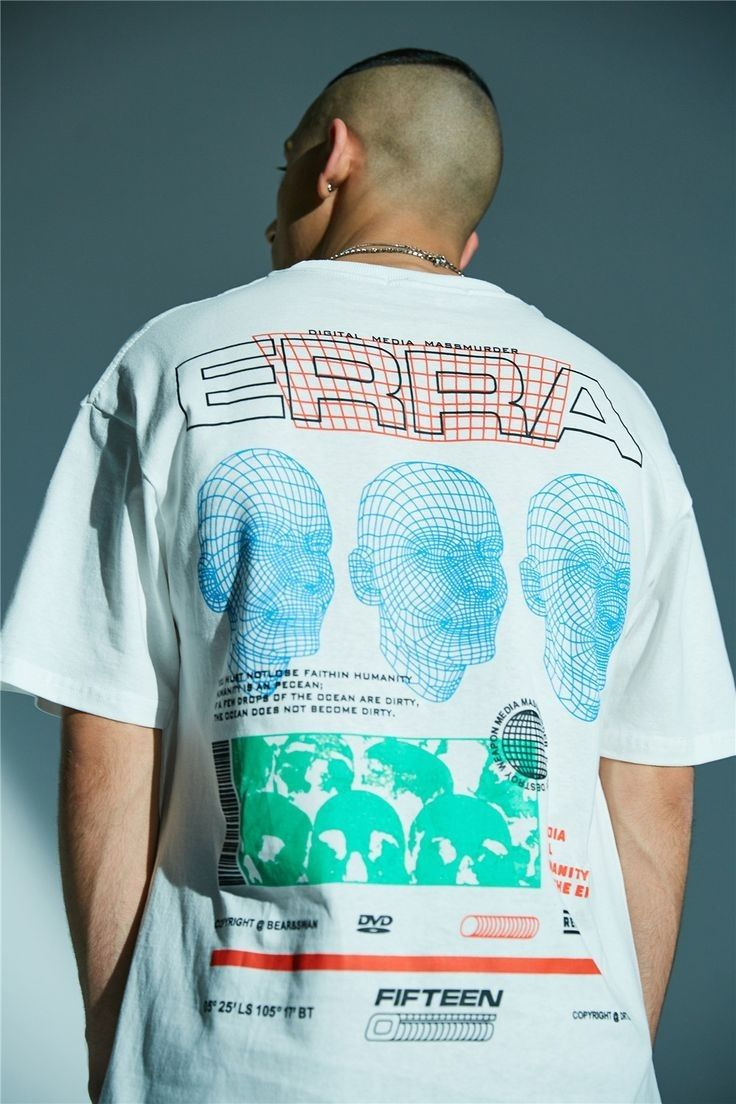Currently Empty: $0.00

Introduction
The t-shirt is undoubtedly one of the most versatile and ubiquitous pieces of clothing in modern wardrobes across the globe. Whether worn as casual everyday attire or as a fashionable statement piece, the t-shirt transcends age, gender, and social class, making it a universally recognized symbol of simplicity, comfort, and self-expression. This essay will explore the multifaceted nature of the t-shirt, delving into its historical origins, cultural significance, evolution in fashion, material considerations, role in sustainability, and its continuing impact on global culture.
1. The History of the T-Shirt
The origin of the t-shirt can be traced back to the early 20th century, evolving through various stages and contexts, from a basic undergarment to an essential part of casual wear and a medium for personal expression.
1.1 The Early Beginnings
Initially, the t-shirt was designed as an undergarment for workers and soldiers during the late 19th and early 20th centuries. The U.S. military is often credited with popularizing the t-shirt during World War I, where soldiers wore them for comfort under their uniforms. These early versions of the t-shirt were made from lightweight cotton, designed to be breathable and easy to wear.
1.2 The Post-War Transformation
The transformation of the t-shirt into an outer garment occurred in the post-World War II era. As soldiers returned from war, the need for comfortable clothing grew, leading to the widespread adoption of the t-shirt in American fashion. By the 1950s, Hollywood stars like Marlon Brando and James Dean showcased t-shirts as symbols of youth rebellion and masculinity in iconic films such as A Streetcar Named Desire and Rebel Without a Cause.
2. The Cultural Significance of the T-Shirt
The t-shirt has always been a canvas for self-expression, a tool for social and political commentary, and a symbol of belonging within different cultural movements.
2.1 T-shirts as a Medium for Expression
One of the most significant cultural roles that the t-shirt has played is as a medium for self-expression. From music band logos to graphic designs representing political ideologies, t-shirts have been worn to convey personal beliefs, support social causes, and reflect individual identities. The rise of counterculture movements in the 1960s and 1970s, especially the civil rights and anti-war movements, saw t-shirts adorned with slogans and images promoting equality and peace.
2.2 T-shirts and Subcultures
The 1970s punk rock scene embraced the t-shirt as a form of rebellion. Punk bands like The Sex Pistols and The Clash popularized t-shirts with graphic designs and controversial slogans. These t-shirts became synonymous with youth resistance, anti-establishment attitudes, and the desire to challenge societal norms. Throughout the decades, the t-shirt has remained a powerful symbol of youth culture and countercultural movements.
2.3 T-shirts and Fashion Statements
Beyond their political and social significance, t-shirts have evolved into fashion statements. Designers like Jean-Paul Gaultier, Vivienne Westwood, and more recently, Virgil Abloh have incorporated t-shirts into their haute couture collections, often turning simple cotton tees into luxury fashion items. A graphic tee, once considered casual and low-key, has now become a status symbol, sometimes costing hundreds of dollars due to designer branding or limited edition releases.
3. The Evolution of the T-Shirt: Fashion Trends Through the Decades
Over the years, the design and style of t-shirts have evolved, reflecting changing fashion trends, technological advancements, and the influence of various subcultures.
3.1 The 1950s: The Birth of the Casual T-Shirt
In the 1950s, t-shirts gained popularity as a standalone garment, thanks to Hollywood stars and a growing youth culture that rejected the formal dress codes of the past. The t-shirt became the emblem of youthful rebellion, as teenagers began to wear them outside the home, often paired with jeans or leather jackets.
3.2 The 1960s and 1970s: The Rise of the Graphic Tee
During the 1960s, the rise of the counterculture and civil rights movements saw the emergence of graphic t-shirts with messages about peace, freedom, and political activism. Popular motifs included peace signs, anti-Vietnam War slogans, and African-American pride statements. The 1970s saw the growth of the rock-and-roll scene, with band t-shirts becoming a major fashion trend.
3.3 The 1980s and 1990s: Streetwear and the Logo Mania
In the 1980s and 1990s, t-shirts became a central part of the burgeoning streetwear culture, with bold logos and graphic prints dominating the fashion scene. Iconic brands like Stüssy, Supreme, and Tommy Hilfiger brought logo-heavy t-shirts into mainstream fashion, marking the beginning of the “logo mania” trend that continues today.
4. The Types and Materials of T-Shirts
While the basic concept of the t-shirt remains the same, the variety of styles, cuts, and materials has expanded significantly. Understanding the different types of t-shirts and the materials used to create them is essential for both fashion enthusiasts and consumers.
4.1 Common Styles of T-Shirts
- Crew Neck: The most common type of t-shirt with a round neckline that sits snugly at the base of the neck.
- V-Neck: A t-shirt with a neckline that forms a “V” shape, offering a more flattering appearance.
- Long Sleeve: For cooler weather, long sleeve t-shirts provide more coverage while maintaining the casual aesthetic of the t-shirt.
- Tank Top: A sleeveless variant of the t-shirt, perfect for hot weather or as an athletic garment.
- Polo Shirt: A more formal version of the t-shirt with a collar and buttons, suitable for business casual attire.
4.2 T-Shirt Materials
- Cotton: The most popular fabric for t-shirts, known for its softness, breathability, and comfort. Cotton is highly versatile and can be easily dyed and printed.
- Polyester: Often used in blends, polyester is durable, wrinkle-resistant, and moisture-wicking, making it ideal for athletic wear.
- Bamboo Fabric: A sustainable alternative to cotton, bamboo fabric is soft, breathable, and eco-friendly.
- Organic Cotton: Grown without harmful chemicals, organic cotton t-shirts are an environmentally friendly option for conscious consumers.
5. T-Shirts and Sustainability
As the fashion industry faces increasing scrutiny over its environmental impact, t-shirts, like many other clothing items, are part of the conversation on sustainability.
5.1 The Environmental Impact of Fast Fashion
Fast fashion has led to an increase in cheap, mass-produced t-shirts, which contribute to overconsumption and waste. The fashion industry’s reliance on synthetic fibers, like polyester, exacerbates the problem, as these materials do not biodegrade easily.
5.2 Sustainable Alternatives
In recent years, there has been a growing movement towards sustainable fashion. Brands are beginning to adopt ethical practices, such as using organic cotton, recycled materials, and eco-friendly dyes. Consumers are also becoming more aware of the environmental impact of their clothing choices, leading to increased demand for sustainable t-shirts.
5.3 The Future of T-Shirt Production
The future of t-shirt production lies in innovation and sustainability. Advances in textile technology, such as the development of biodegradable fabrics and recycling systems, promise to make the production of t-shirts more eco-friendly. Furthermore, the rise of the “slow fashion” movement encourages consumers to invest in higher-quality garments that last longer, rather than contributing to the disposable culture of fast fashion.
6. The Role of T-Shirts in Modern Fashion
T-shirts have transcended their humble beginnings as basic undergarments to become integral to high-fashion collections, streetwear, and everyday life. Today, they are an expression of personal style, political beliefs, and pop culture references. As fashion continues to evolve, the t-shirt remains a key piece in the wardrobe of almost every individual.
Conclusion
The t-shirt has come a long way from its origins as a simple undergarment worn by soldiers to becoming a cornerstone of contemporary fashion. Whether as a canvas for self-expression, a tool for political activism, or a luxury fashion statement, the t-shirt remains as relevant as ever in today’s fashion landscape. As we continue to innovate and address the environmental concerns surrounding the fashion industry, the t-shirt will undoubtedly remain a symbol of comfort, individuality, and, importantly, sustainability in the future.
This outline and introduction can be expanded into more specific details and examples for each section. Adding statistical data, interviews with fashion experts, or historical references would help further enrich the content and provide a solid foundation for reaching 5000 words. You could also include discussions on regional differences, collaborations in the fashion world, and the role of social media in popularizing t-shirts, among other topics.
4o mini
O

